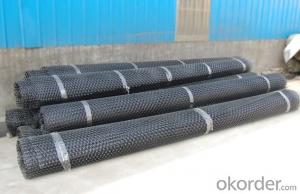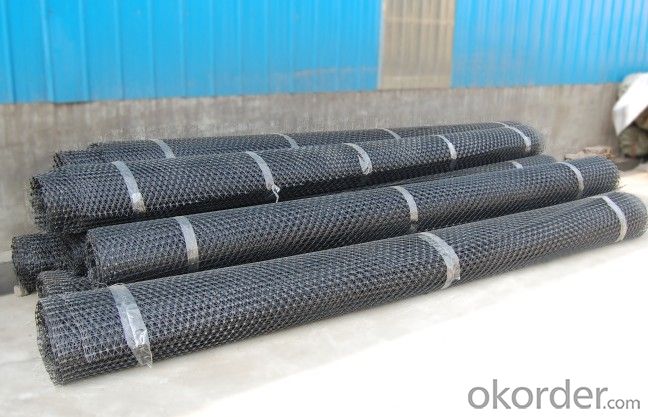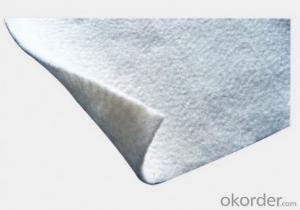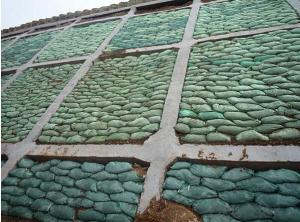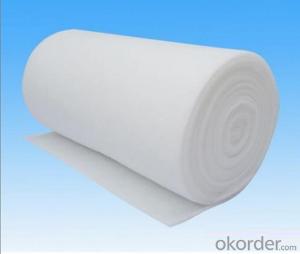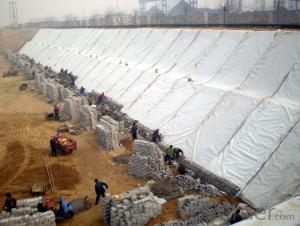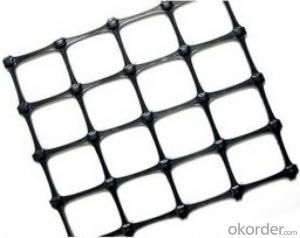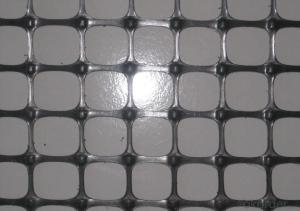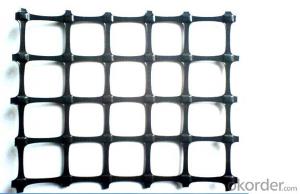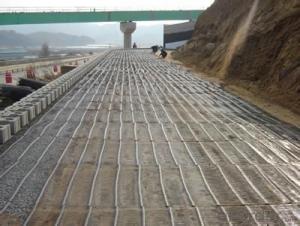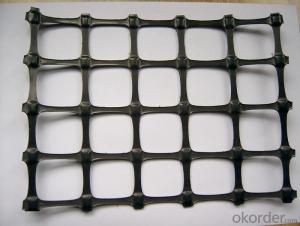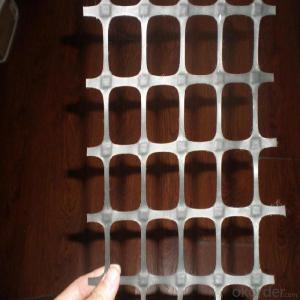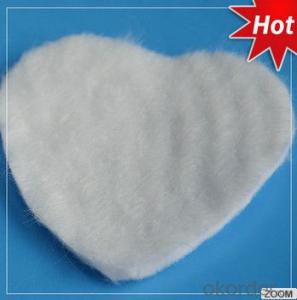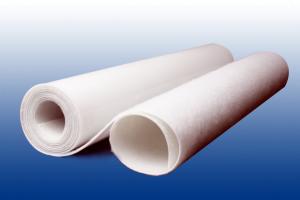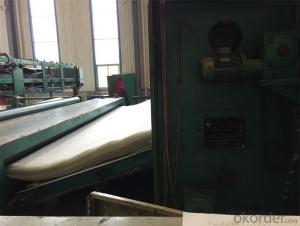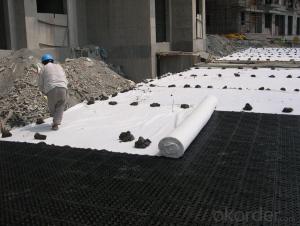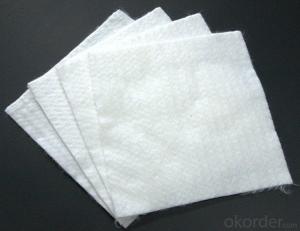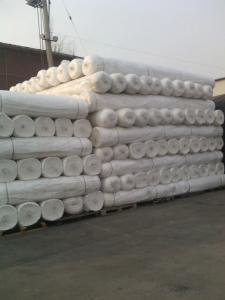Pot Geotextile PP Biaxial Geogrid with CE Certificate
- Loading Port:
- China Main Port
- Payment Terms:
- TT OR LC
- Min Order Qty:
- -
- Supply Capability:
- -
OKorder Service Pledge
OKorder Financial Service
You Might Also Like
Specifications
1. OEM and ODM
2. virgin material
2. CE, ISO 9001, MA,CNAS, AL, IGS Member
3. Ten more years biaxial geogrid suppliers
PP biaxial geogrid (TGSG1515-3030)
Specification & index:
Specification |
| TGSG15-15 | TGSG20-20 | TGSG30-30 | TGSG40-40 |
Index | unit | MD CD | MD CD | MD CD | MD CD |
true initial modulus in use | KN/m | 15 15 | 20 20 | 30 30 | 40 40 |
true tensile strength @2% strain | KN/m | 5 5 | 7 7 | 11 11 | 16 16 |
true tensile strength @5% strain | KN/m | 7 7 | 14 14 | 21 21 | 32 32 |
junction efficiency | % | 100 | 100 | 100 | 100 |
flexural stiffness | mg-cm | 280,000 | 780,000 | 900,000 | 1,200,000 |
aperture stability | kg-cm/deg | 3.1 | 4.8 | 4.3 | 3.4 |
resistance to installation damage | %SC/%SW/%GP | 95/93/90 | 95/93/90 | 95/93/90 | 95/93/90 |
resistance to long term degradation | % | 100 | 100 | 100 | 100 |
unit weight | g/m2 | 250-310 | 270-330 | 340-420 | 430-530 |
rolls dimensions (length, width) | m | 50*3.9 | 50*3.9(5) | 50*3.9 | 50*3.9 |
loading capacity | rolls/40HC | 205 | 180 | 120 | 88 |
Application:
PP biaxial geogrids can be used to enhancement of permanent bearable soft including highway and railways embankment, slopes, tunnel, airport, parking lots, loaded pier and ground and their main usage are as follows:
1. enhance the bearing capacity fo road foundation and extend the duration of highway.
2. prevent highway surface from collapse, crack and being dirty.
3. be convenient for construction timesaving and cut down the cost of maintenance.
4. prevent tunel from crack occuring
5. further solidity slopes to proof water and soil from losses
6. reduce the surface thickness of the ground.
7. consolidate the net for growing grass on the slopes
so as to stabilization surrounding virescence.
8. be used for artificial top net of mines instead of metal ones.
It is of flame retardant and antistatics.
- Q: How do geotextiles help with reinforcement of geogrid retaining walls?
- Geotextiles help with reinforcement of geogrid retaining walls by providing additional strength and stability. They are placed between the geogrid and the backfill soil, acting as a separation layer. Geotextiles prevent the migration of fine particles from the soil into the geogrid, reducing the risk of clogging and maintaining the proper functioning of the wall. Additionally, they distribute the load more evenly across the geogrid, enhancing its tensile strength and overall performance.
- Q: What are the considerations for geotextile selection in road rehabilitation projects?
- When selecting geotextiles for road rehabilitation projects, there are several important considerations to keep in mind. Firstly, the geotextile should have sufficient strength and durability to withstand the expected loads and stresses in the road environment. It should also be resistant to degradation from environmental factors such as ultraviolet (UV) radiation and chemicals. Another consideration is the desired function of the geotextile. Different types of geotextiles offer various benefits, such as separation, filtration, drainage, or reinforcement. The specific requirements of the road project will determine which function is most important. Additionally, the properties of the soil and subgrade should be considered when selecting a geotextile. The geotextile should be compatible with the soil type and provide the necessary soil stabilization or separation capabilities. It is crucial to assess the project's soil conditions and consult with geotechnical engineers or experts to determine the appropriate geotextile specifications. Lastly, cost-effectiveness is an essential consideration. The selected geotextile should provide the desired performance while being economically viable for the project. Considering the long-term benefits and expected lifespan of the geotextile can help in making a cost-effective decision. Overall, the considerations for geotextile selection in road rehabilitation projects involve strength, durability, desired function, compatibility with soil conditions, and cost-effectiveness.
- Q: Are geotextiles commonly used in coastal erosion control?
- Yes, geotextiles are commonly used in coastal erosion control. They are a popular choice due to their ability to stabilize soils and reduce erosion by acting as a barrier against wave action and water flow, while still allowing for water filtration. Geotextiles help to strengthen and protect coastlines, making them an effective solution in coastal erosion control strategies.
- Q: What are the different geotextile reinforcement techniques for slopes?
- Some of the different geotextile reinforcement techniques for slopes include the use of geotextile fabrics, geogrids, and geocells. Geotextile fabrics are commonly used to stabilize slopes by providing separation and filtration of soil particles. Geogrids, on the other hand, are high-strength materials that are used to reinforce soil and increase its stability. Geocells are three-dimensional cellular structures that can be filled with soil or other materials to create a stable slope. These techniques can be used individually or in combination to provide effective reinforcement for slopes and prevent erosion.
- Q: What are the factors to consider when designing geotextile tubes for dewatering?
- When designing geotextile tubes for dewatering, there are several factors to consider. These include the nature and composition of the sediment or sludge to be dewatered, the required dewatering rate, the size and shape of the geotextile tubes, the strength and permeability of the geotextile material, the location and environmental conditions, and the availability of equipment for filling and handling the tubes. Additionally, factors such as cost, durability, and the potential for reuse or disposal of the dewatered material should also be taken into account.
- Q: Can geotextiles be used for reinforcement of paved surfaces?
- Yes, geotextiles can be used for the reinforcement of paved surfaces. Geotextiles are commonly deployed underneath the asphalt or concrete layers of paved surfaces to enhance their strength, stability, and durability. They help distribute the load over a larger area, prevent cracking and rutting, and control the growth of vegetation. Additionally, geotextiles can minimize the potential for reflective cracking and provide separation between different layers, enhancing the overall performance of paved surfaces.
- Q: Can geotextiles be used in green wall construction?
- Yes, geotextiles can be used in green wall construction. Geotextiles provide several benefits such as soil containment, erosion control, and moisture retention, which are essential for the successful establishment and growth of plants in green walls. They can help improve the structural integrity of the wall, prevent soil erosion, and provide a suitable environment for plant roots to grow and thrive.
- Q: What is the effect of highway geotextile on highway construction?
- Highway geotextile is a new type of civilized artifacts in the construction of the time, laying highway geotextile can improve the carrying capacity of the road, can improve the use of the road in the process of structural damage. As the geotextile has the role of shock absorption, and has a high elasticity and resistance to deformation, so you can make the road to bear the load and stress more uniform. In the project using Hongxiang new geotextile can also improve the rigidity of the road, help to reduce road cracks.
- Q: What are the different guidelines for geotextile installation in erosion control projects?
- The guidelines for geotextile installation in erosion control projects may vary depending on the specific project and site conditions. However, some common guidelines include conducting a thorough site assessment, properly preparing the subgrade, ensuring proper overlap and seam strength of geotextile materials, adequately anchoring the geotextile to prevent movement, and regularly inspecting and maintaining the geotextile for any damages or clogging. Additionally, following manufacturer recommendations and consulting with experienced professionals can also provide valuable insights for successful geotextile installation in erosion control projects.
- Q: Can geotextiles be used in green roof construction?
- Yes, geotextiles can be used in green roof construction. Geotextiles are often used as a separation layer between the soil and the roof membrane to prevent soil erosion, provide drainage, and promote plant growth.
Send your message to us
Pot Geotextile PP Biaxial Geogrid with CE Certificate
- Loading Port:
- China Main Port
- Payment Terms:
- TT OR LC
- Min Order Qty:
- -
- Supply Capability:
- -
OKorder Service Pledge
OKorder Financial Service
Similar products
Hot products
Hot Searches
Related keywords
